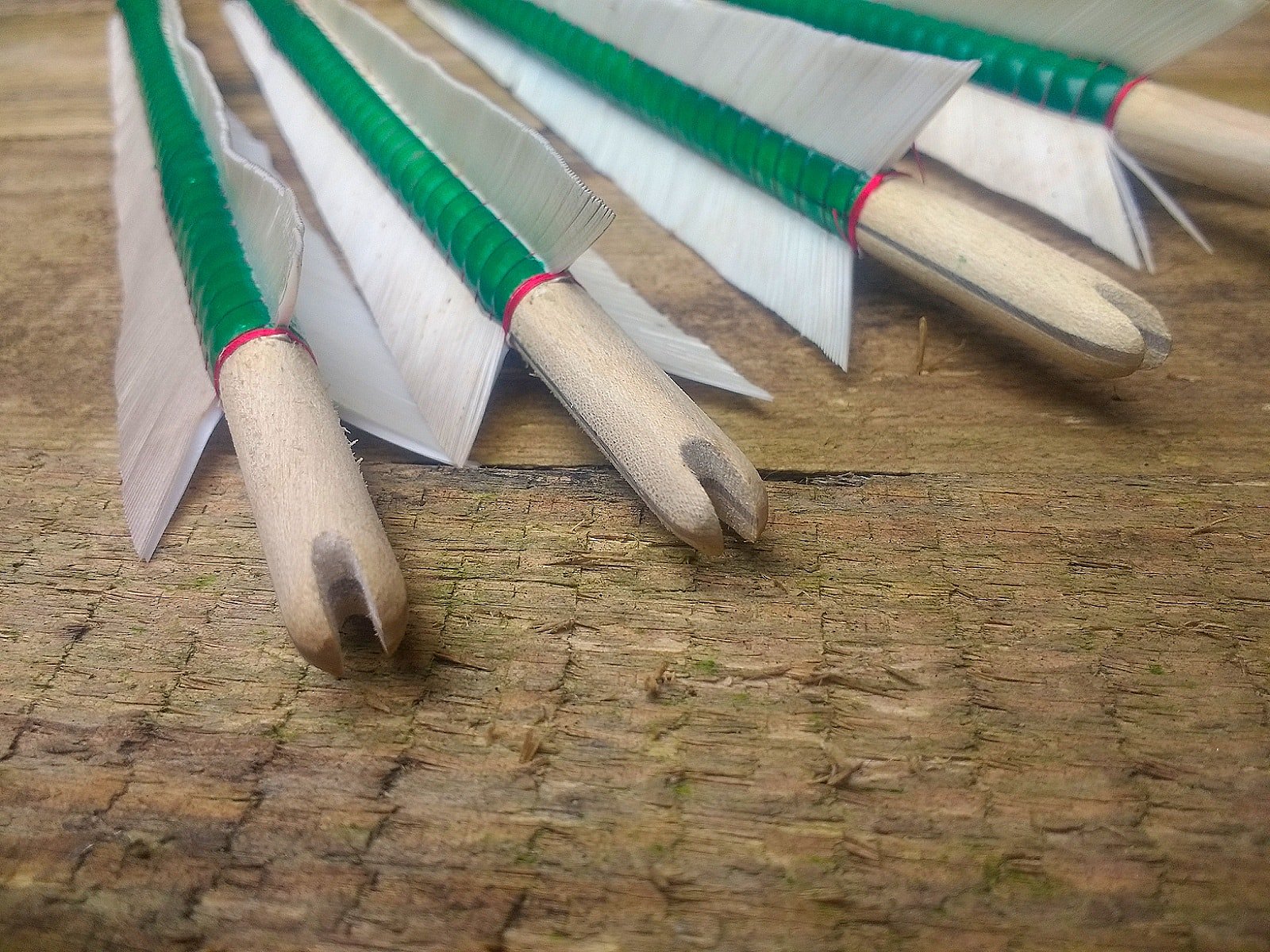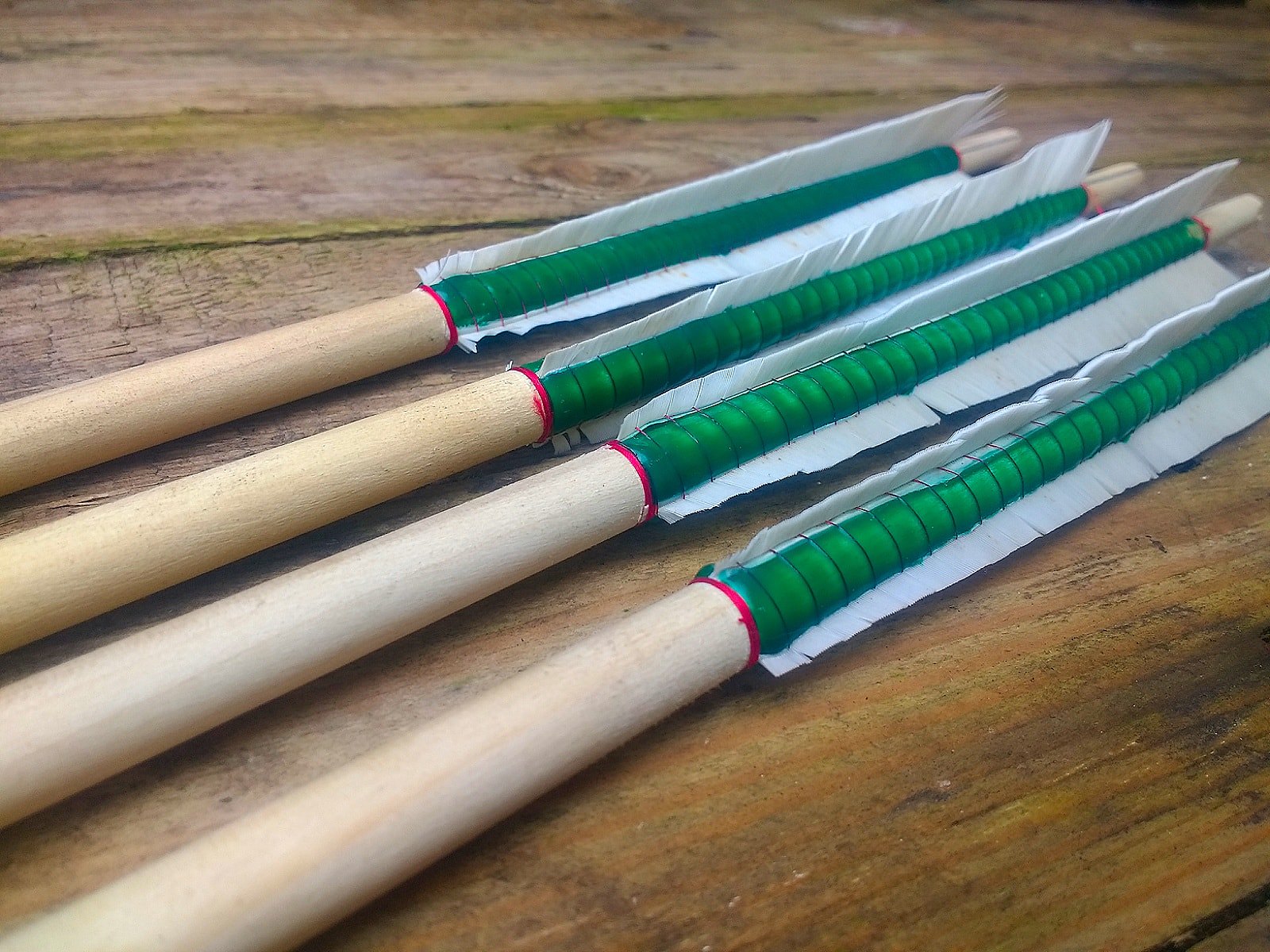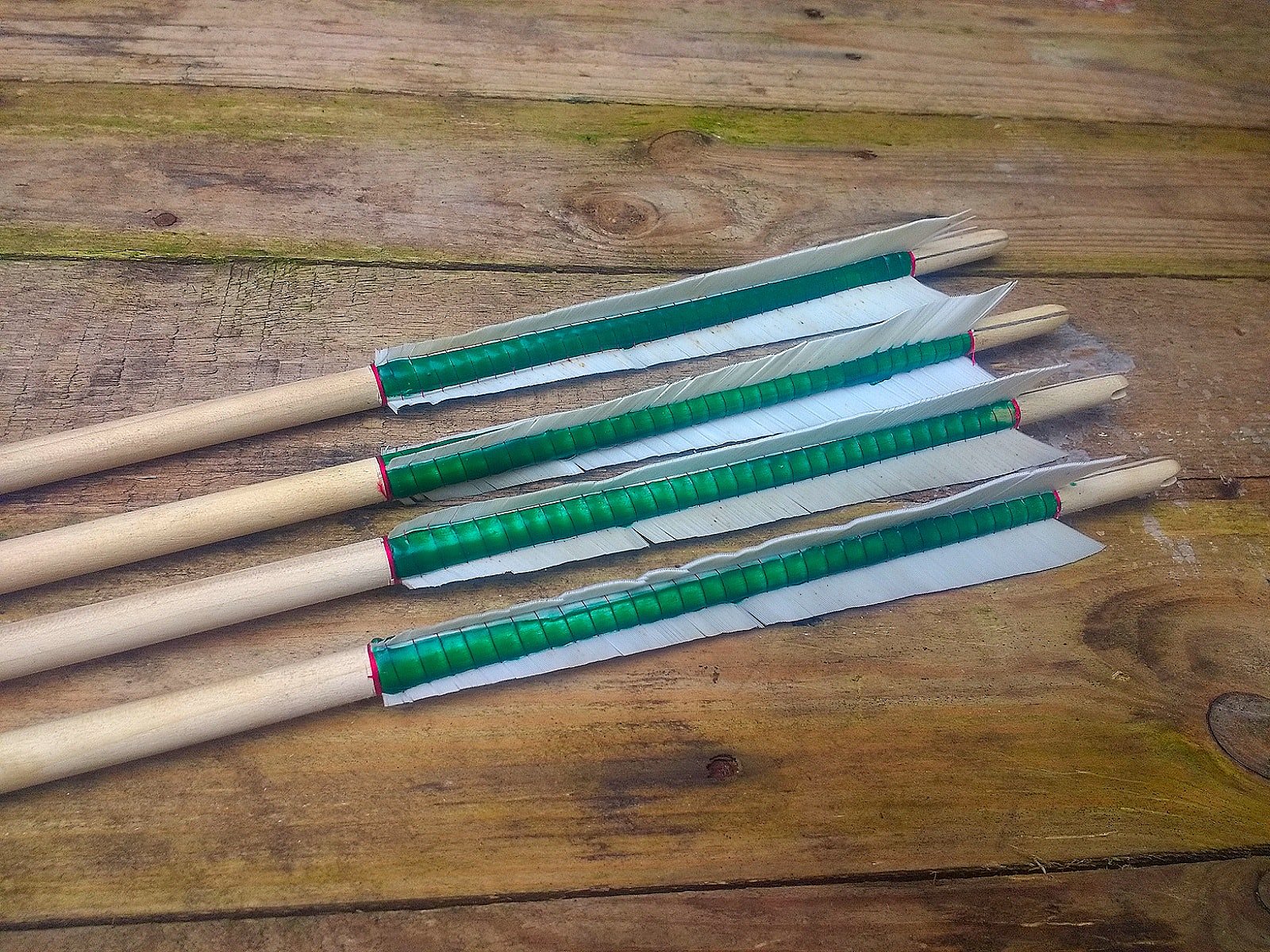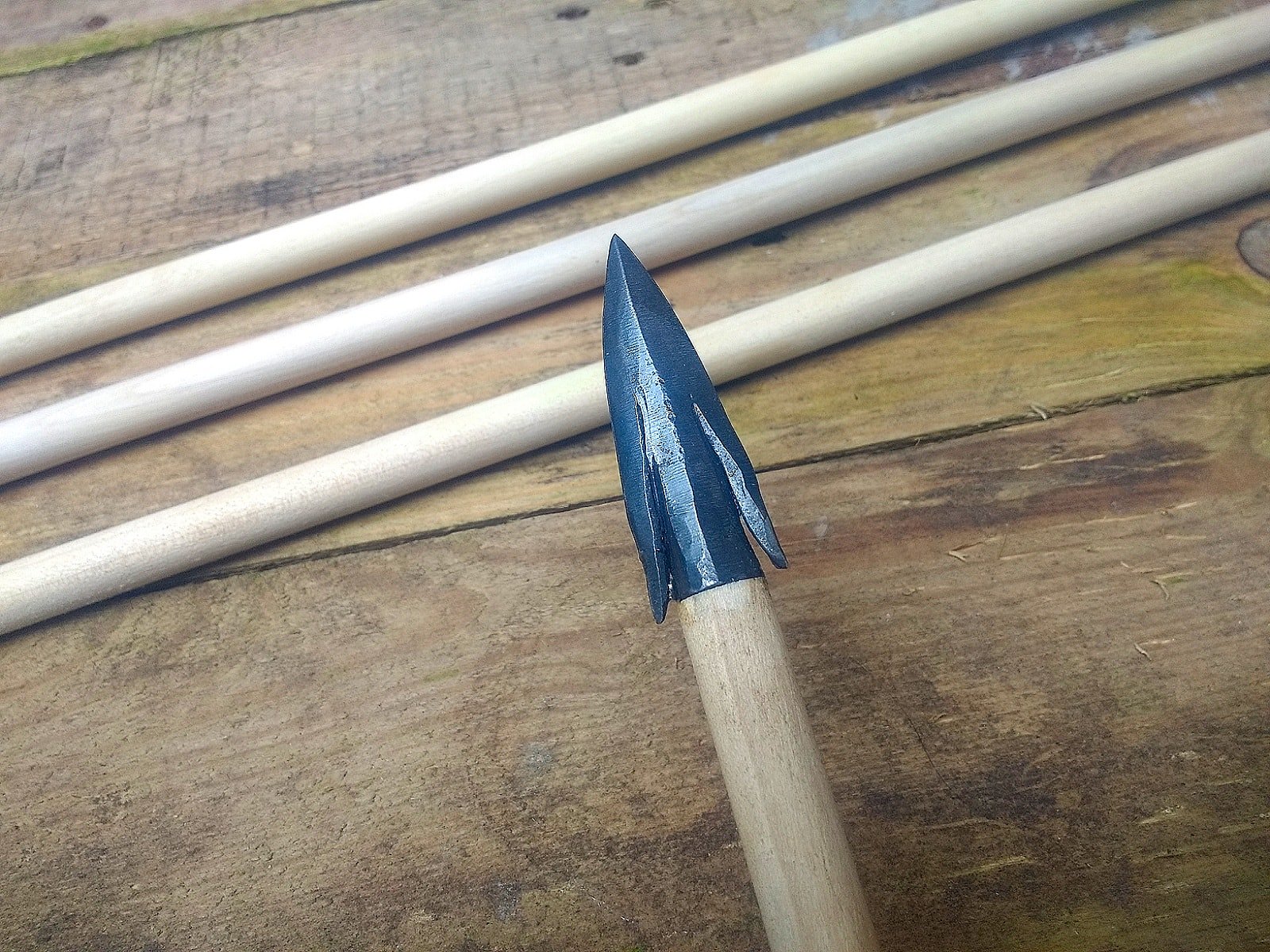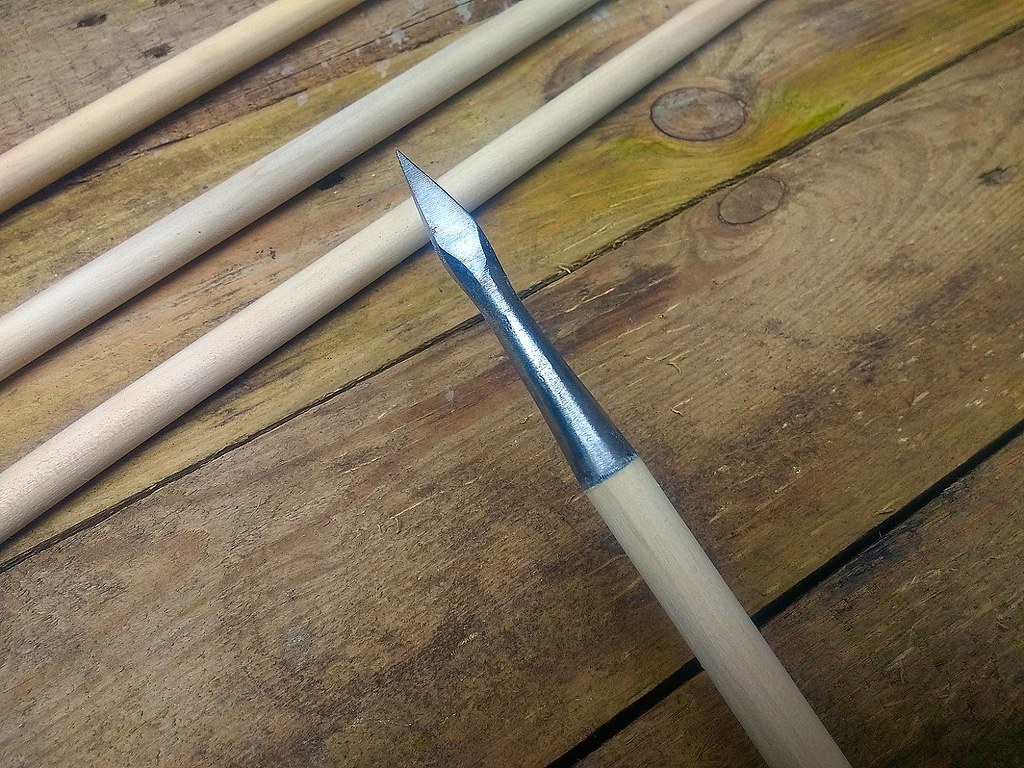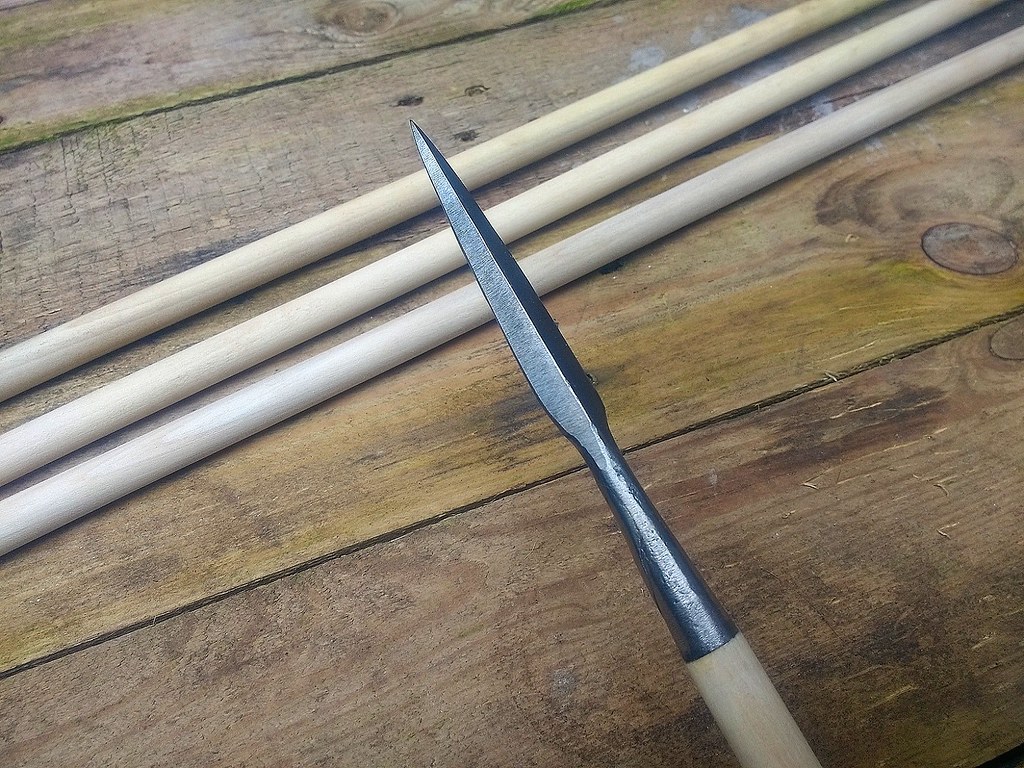One of my recent commissions was for the Buckingham Gaol Museum here in the UK, as they're doing a summer exhibition on the 100 Years War and wanted a selection of arrows for the display.
These are as close as I can get to historically correct arrows from that period.
The shafts are black poplar (Populus nigra) and tapered to meet the exact measurements of Mary Rose arrow MR82A1892/9. This is a two stage taper which seems to be the true "bobtail." Most people think a medieval arrow is a straight taper from head to nock, but I've found that's not the case with any of the extant arrows I've examined. They also have a nock diameter of just over 8mm, which again is what most arrows I've seen tend to have (if not smaller), instead of the 10mm or 3/8" nock diameter that's become the accepted standard.
The nocks are split with a blade and fitted with blonde cow horn that's peeled like an onion from the main horn, instead of the bulky 2 or 3mm strips sold in archery shops. The horn is glued in place with hide glue.
Fletchings are white swan, bound with red silk into a compound of beeswax, kidney fat and copper verdigris.
The heads are all hand forged by myself, from wrought iron which is about as close as we can get to medieval bloomery steel without sending the budget through the roof! They are a long Type 7 with diamond section, a short Type 8 with square section, a heavy Type 9 with diamond section and a barbed Type 16 which has steel barbs forge-welded to the iron body.

